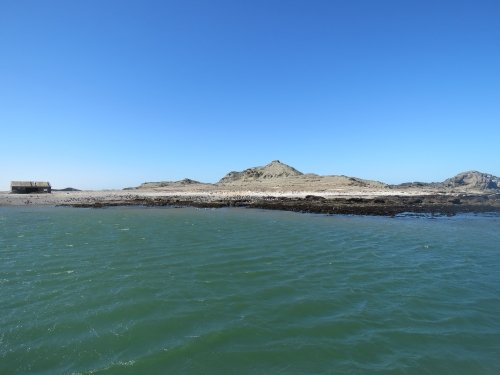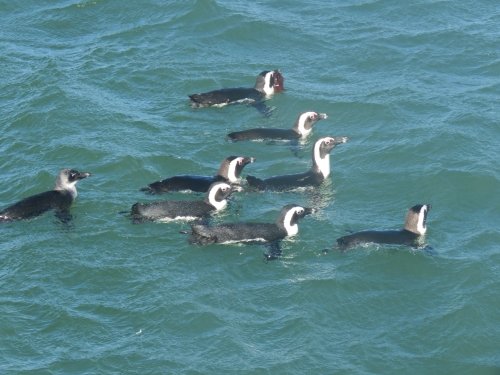Els Slots
Benguela Current
Few of you will be familiar with the Benguela Current. At least I wasn’t before I started researching my Namibia trip. At the country’s Tentative List I found an entry called The Benguela Current Marine Ecosystem Sites . It could surely do with a more catchy name and/or an epic subtitle if it ever were to be nominated, but in reality it is quite an interesting site. The Benguela Current is an ocean current that carries icy cold, wind-driven upwelled waters from the depths of the Atlantic Ocean. These waters are very rich in nutrients, and they support a whole food chain from phytoplankton via fish to sea birds and marine mammals.

The proposed nomination includes a marine ecosystem along the southern Namibian coast including Mercury Island, Ichaboe Island, Halifax Island and Possession Island. In the coastal town of Lüderitz there are catamaran trips on offer to one of these islands: Halifax. They leave daily (weather permitting) at 8 a.m., take 2 hours and cost 450 Namibian dollar (about 30 EUR).
Halifax Island is home to the largest colony of jackass-penguins in Namibia. Lüderitz (“home of the sand storm”) is known for its windy weather, and I wondered how that would affect the boat trip. Just to be sure I had taken an anti-seasickness pill an hour before we left. Fortunately the sea wasn’t rough at all – the winds mostly start from the late morning - and we did not travel so fast. It was lovely to sit outside at the tip of the catamaran, watching small dolphins jumping around and looking at the small rock islands covered in bird guano.

In fact, the guano presence has turned the site into a mixed nomination: there was a true ‘guano rush’ here from the 1870’s til the early 20th century. Ships industrially collected the guano as fertilizer. Special wooden platforms were constructed to encourage the sea birds to breed, so the guano can be harvested annually by humans to sell as organic fertilizer. This practice still is active at this site. Penguin guano was also collected until 1949 from Halifax Island, and the sheds of the miners are still visible there.
After sailing for half an hour or so, we already arrived at Halifax Island. Ships are not allowed to land on the island itself, but they can linger just before its coast. We did so for about 30 minutes, in which we observed small groups of penguins swimming closely to our catamaran. It was the first time that I had ever seen penguins swim, with their paddling they somewhat resemble ducks! On the island’s beach there were hundreds, maybe even thousands of penguins standing around as well in their classical manner. It was a wonderful experience to see them here acting in and out of the sea.

Later that day we visited a coastal viewpoint at the mainland in roughly the same area that we covered by boat earlier. It is named Diaz Point, after the navigator Bartolomeu Diaz who sailed by in 1488 and had a cross erected at a coastal rock. The rock can still be climbed, though the path upwards would not meet any health & safety regulations in most countries. The wind at the top is terrible. But it is the best viewing point for the Cape Fur Seal colony on an small island just offshore. I had seen it from the boat as well, but the sea was particularly rough around it so we could not get close. I find it funny to see that the species each have their own favourite island. From Diaz Point, many sea birds can be observed as well as flamingos.
More on
Els SlotsComments
No comments yet.
